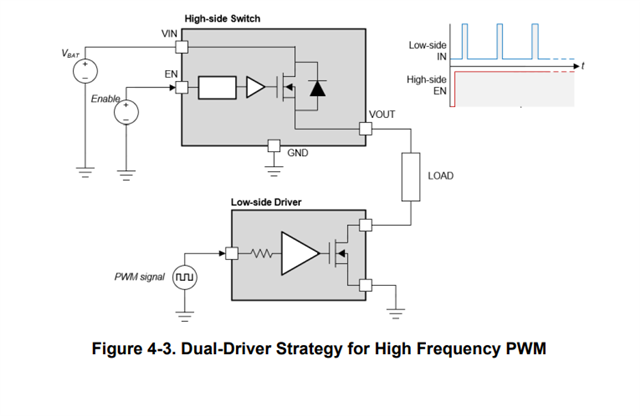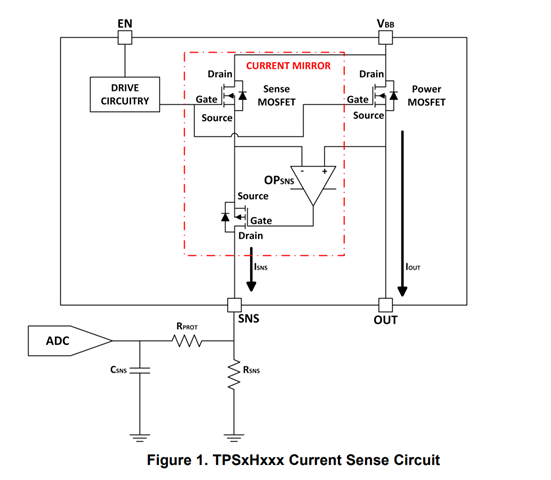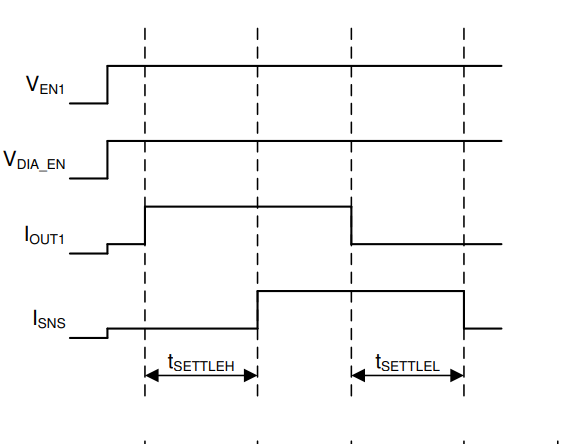Hello,
I have a question. what is happening when I have on the output a load and then an additonal MOSFET connected to ground to generate a PWM signal. The PWM frequency of the MOSFET is 3kHz. What does it mean for the current measurement inside the IC. Which value do I get on the SNS output, measuring the current?. Which value on ILIM I have to set? The duty cycle can be in the range of 50% to 100%.
Thanks a lot!
Best regards, Xaver





